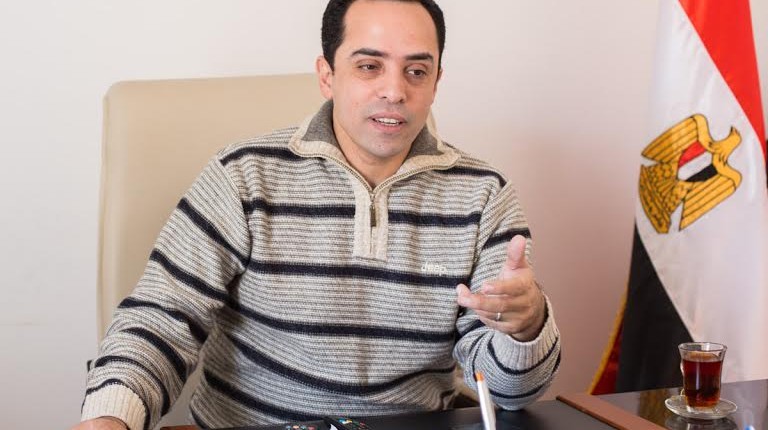In a majestic procession, 22 kings and queens of the Pharaonic state will be moved from the Egyptian Museum for the first time to the place of their permanent exhibition in the National Museum of Egyptian Civilization in Cairo’s Fustat region.
They will move through the streets of Egypt parallel to the Great Nile River in glass boxes on Pharaonic military wheels drawn by Egyptian horses, surrounded by palm trees and papyrus from both sides. There will also be the Republican Guard present who will provide a 21-gun salute and military parades to celebrate this exceptional historic event.
The Egyptian state is very keen to ensure that the royal mummies are transmitted in a manner befitting the greatness of the history of Egypt in the past and present. When the mummy of Ramses II travelled to France, for example, a 21 gun salute took place to mark the occasion.
The royal mummies date back to the 17th, 18th, 19th, and 20th dynasties of Ancient Egypt, and include 18 mummies of kings and four mummies belonging to queens. The order of kings in the procession of mummies will begin with the most famous king in the world, so the majestic procession will be led by the Pharaoh Ramses II.
This is because he enjoys international fame as the sun passes on his face in the Abu Simbel temple twice a year, in a unique phenomenon that thousands of tourists from around the world come to see.
This event is a historic event that attracts the world’s attention to Egypt, and is an important factor in revitalising Egyptian tourism as it depends on the opening of new tourist attractions. It also carries many strategic connotations that cannot be overlooked, especially at this very sensitive time for Egypt.
This is in light of the Grand Ethiopian Renaissance Dam (GERD) crisis which has already taken a thorny path threatening peaceful negotiations, and also comes in light of the tireless efforts of the Egyptian state to revive the peace process in the Middle East region.
The procession includes several kings and queens who have become a symbol of power throughout history, inspiring the Egyptian army and armies around the world. Yet despite their great victories, they favoured peace and were keen to establish strong strategic relations with the neighbouring countries, regardless of hostility.
The procession includes, for example, the mummy of King Thutmose III of the 18th Dynasty, who is considered the first and most prominent king of the East. Thutmose III fought 17 unbeaten military campaigns, ruled for 56 years, and made the first empire in the East that extended from the Levant to Turkey. He ruled with great skill, and his military plan is taught to this day in many military schools around the world.
The procession also includes the mummy of King Ahmose I, the liberator of Egypt, the conqueror of the Hyksos and the Asians, and the founder of the 18th Dynasty, which is considered the greatest family that ruled Egypt.
Ahmose developed the Egyptian army, so he was the first to use war wheels and also developed weapons of war using darts equipped with piece of iron. He also fought the Hyksos, starting from Upper Egypt, and the people gathered around him, so he trained them efficiently until they became strong and skilled warriors.
He continued to fight the Hyksos from Upper Egypt until he reached Sinai and then reached Palestine. He did not return until he was assured that the eastern borders of Egypt were safe from the Hyksos and their attacks after they were eliminated.
The procession also includes the mummy of King Seti I, the father of Ramses II. He successfully resisted the Hittites, who ruled Asia, and made a peace treaty with them despite his victory over them.
In addition to the kings with a bright history, the procession includes the mummy of Queen Hatshepsut, who continues to represent a long-standing symbol for all women leaders around the world to this day.
Hatshepsut is one of the most important rulers of Egypt, as her era was marked by peace and prosperity, the improvement of the army’s strength, the security of the Egyptian borders, and the consolidation and development of diplomatic and commercial relations and ties with neighbouring Egypt.
She was the first woman to rule Egypt, and was a source of inspiration for many queens after her, such as Queen Cleopatra. This is in addition to Queen Ahmose Nefertari, who was named after her husband, Ahmose I, as she was the first general in history.
Finally, the procession is led by King Ramses II, who was called “the king of war and peace,” as he is the most famous pharaoh in history, the owner of the largest architectural facilities in the history of Egypt, the owner of the fiercest battles against its enemies, and the owner of the first recorded peace treaty in history.
On the walls of the Karnak Temple in Luxor, the details of this treaty between the Ancient Egyptians and the Hittites were recorded. It is also worth noting that the title of “Hero of War and Peace” was also awarded to the late President Muhammad Anwar Sadat after he concluded a peace treaty with the Israeli side after his victory in the 6th of October War, which was a peace based on strength.
This royal procession, despite its importance as a historic tourist event, is a message to the whole world to show the nobility of the Egyptian army in the past and present and confirms that peace has always been a primary goal for all Egyptian rulers in the past and present despite the tremendous military power. This procession is truly a procession of power and peace, and Egypt was and will remain the land of peace.
Dr Marwa El-Shinawy, PhD in American Theatre and member of the Higher Committee for the Cairo International Festival for Contemporary and Experimental Theatre

